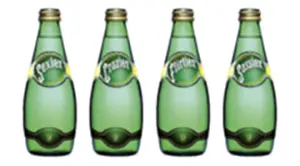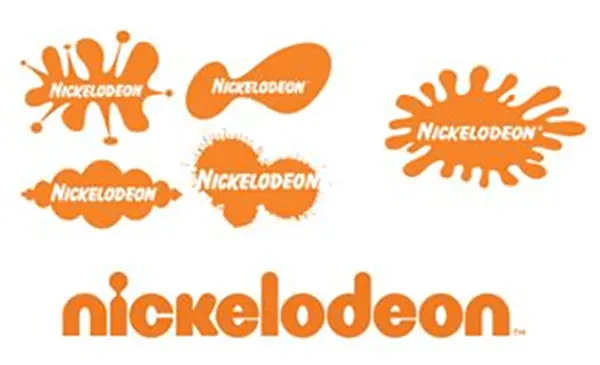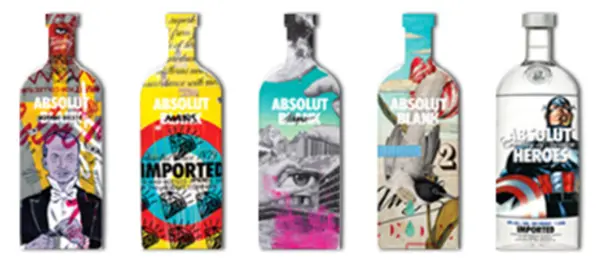
Alliance Center for
Intellectual Property Rights
FLUID MARKS AS MARKETING STRATEGY IN DIGITAL ERA
January 15, 2025
*Mr. Divya Bhushan
**Dr. Ujwal Prabhakar Nandekar
INTRODUCTION
Fluid marks are non-traditional marks that are not specified under the Trade Mark Act, 1999, or referred in any international treaty or law of intellectual property. The concept of fluid marks revolves around the idea of making minor changes, alterations or modifications to the existing mark, without changing the main elements of the original mark. The fluid marks are the modified version of the original registered marks. The idea of fluid marks is the exception to the general concept of trademarks, that a mark should be static for a longer period of time and it should be consistent so that it does not confuses the consumers, however with the adaptation of new marketing and branding strategy i.e., fluid marks, it poses challenges to the primary concept of trademarks law.
We all are aware about numerous well-known conventional trademarks in various forms. In this era of digital technologies, a new kind of marks has grabbed the public’s attention in the commercial and marketing sector, as they are eye-catching as well as evolving in nature. As per the concept of tradition trademarks, it is a constant and static mark which makes the good or services of an owner distinctive from others, but the new concept of marks i.e., fluid marks are ever-evolving and not constant in nature. As the fluid marks are not static and they keep on changing. During the wake of Covid pandemic, various brands have tweaked their well-known marks to raise awareness regarding the same. The fluid marks are the perfect examples of marketing strategies mainstreaming trademarks as tools in the digital era. The concept and idea of fluid marks have challenged the basics of traditional trademark law, i.e., the notion of familiarity and repetition.
The fluid marks help an already existing mark to widen its scope and are heavily relied upon today for effective marketing strategies as they make the existing mark more ‘alive.’ The significance of having a fluid mark is centred around, the rapidly changing arena of Information Technology posted by new marketing tools, as increase in imagination is necessitated. Fluid marks is considered as a new and innovative marketing strategy/tool, used by companies to attract the audience’s attention. The biggest challenge to the brand using fluid mark as marketing strategy, is the registration process of the mark. As the lifespan of a fluid mark is very short and the registration procedure of a trademark is very lengthy, so it creates difficulty in protecting the mark from any unauthorized third-party usage. Also, with the excessive and more frequent changes in the original mark will have a high possibility of diluting the reputation and recognition of the original mark. And it also weakens the original mark and creates a risk of abandonment.
DEFINITION AND MEANING OF FLUID MARKS
The new concept of fluid marks is a kind of non-conventional trademarks. And they are not specifically defined under the trademarks law. The traditional concept of trademarks law talks about consistency and static marks, so that they eventually build a reputation and image in the minds of the consumers, and this helps consumers to identify the goods of a certain brand. But with the significant growth in the technology and digital media, the brands are now coming up with various new media and advertising strategies. In these recent times, the adoption and usage of fluid marks by various companies and brands has become a very common approach, to promote their products. The fluid changes and alterations help them to boost client understanding and to be relevant in the market as per the new changes. Although, the fluid marks grab the customers’ attention as it is unique, dynamic, striking and gives a new alternative to the original mark.
The fluid marks are nothing but an adaptation of an already existing mark, and it co-exists alongside the pre-existing mark to increase the customer’s interest. The fluid marks have variations and changes, which are made to the original mark, without diluting the main elements and essence of the original mark. The fluid marks are also known as “living marks” as they are altered frequently. Although, the fluid marks are used as promotions or marketing strategies or to commemorate a significant event or occasion, it should only be based on the existing well-known trademarks that have been tweaked to make them fluid.
The concept of fluid marks can only be adopted by well-known or well-established brands, who already have a reputation and goodwill in the market through the usage of their original well-known mark. And adopting the concept of fluid marks by such well-known brands can play a crucial role in pushing the boundaries of a trademark in new ways and to expand the business. It also attracts a new dimension of audiences. Despite the frequently changing nature of a fluid mark, it gives popularity to brand owners and also attracts various risks.
The fluid marks can only be considered when the original brand has already a reputation in the market, as it helps the brand owners to re-popularize its mark while having the traces of the original mark. As in the example of Google doodle, although it redesigns the google logo multiple times to honour or celebrate an occasion or event, but in each of its design it has the main element of the Google’s registered trademark i.e., the word mark G-O-O-G-L-E.
TYPES OF FLUID MARKS
A fluid mark can be a word, phrase, symbol or design and it also identifies and differentiates the source of goods or services as it does with the traditional marks. The term “fluid marks” implies as marks that fluctuate throughout the time. It means that the concept of fluid marks defeats the traditional concept of trademarks, which depends on the consistent, static or fixed structure of the mark, that a consumer can easily recognize and connect. However, with the rapid progression of digital age and digital media, the brand owners have sought to make their registered trademarks shinier to attract and retain public attention. In the recent outbreak of Covid19, various of the well-known companies modified their trademark and adopted fluidity as marketing strategy to spread awareness about social distancing to its consumers and public at large. For example, the vary famous automobile brands Volkswagen and Audi, modified their marks to spread awareness about social distancing.


Although the duration of fluid marks is for a shorter period, but with its dynamic and unique portrayal, they are easily recognizable with the original mark. The very popular search engine Google, frequently changes the Google mark to honour holidays, historic events, anniversaries, and cultural events. The Google name these variations as Google doodles, these doodles although they are continuously changing as per the events, but it has created its own recognition in the minds of public at large.

The risk arises when a company with unknown trademark, uses the fluid marks as a part of business or marketing strategy, because the consistency and repetition of trademark do assist to enhance market awareness and identification of the mark. Similarly, when a mark which is weak, meaning thereby which is used by others already for same or comparable word for similar goods or services, and if they use fluid marks then portraying it inconsistently will make the mark weaker. Also, making changes or alterations to the mark too much as it is likely to dilute the elements of original mark will defeat the purpose of fluid marks, as it will eventually result into diluting the reputation of original mark and confusing the public at large. For example, the Google once used the fluid mark to celebrate the birth anniversary of the famous American painter Jackson Pollock, in which the used the fluidity too much which resulted into diluting the original word mark of Google.

The fluid mark can be applied over an original mark in various ways, such as:
- By ornamenting the trademark;
- By altering the trademark’s background;
- By filling the frame of the trademark, like television channel icons;
- By using moving designs;
- By using many and ever-changing designs.
Although companies can maintain the key features of its original mark while using the fluid marks and avoid the risks of utilizing fluid marks: firstly, the company should maintain the main feature of its original mark and the original mark should be visible even of the mark is altered, so that the consumers don’t get confused and link the modified mark with the original base mark. The primary example is Google doodle (the Google typically maintains its distinctiveness and has its primary colours unchanged in its doodle).
Secondly, the brand owner should always maintain the original mark and they should avoid terminating or abandoning its original mark, even if they are using its fluid mark for marketing or advertisement purposes. And thirdly, the brand owners should always have a check on the usage of the fluid marks, as they should prohibit regular changes and also continuously monitor that their mark is not infringed by any third party.
PROMINENT EXAMPLES OF FLUID MARKS
There are few of the examples of fluid marks, where the famous brands have utilized the fluid marks as marketing strategy for their brand. The Google doodle is also one of the best examples where the very famous brand GOOGLE adopted the fluid marks to get active and relevant in the market. Similarly, the famous French brand Perrier, has its word mark registered as P-E-R-R-I-E-R, and uses a certain design over its carbonated mineral water bottle to distinct it from the goods or services of others. Although, the brand has recognition and reputation in the market, but when they used the fluid marks, they increased the sales of their brand. The company started a campaign where the brand name transformed from Perrier to terms like HEALTHIER, SASSIER, CRAZIER, SEXIER and RISKIER on its bottle label for advertisement and promotional purposes. Such an approach by the company to utilize the concept of fluid marks, helped the brand to retain its engagement in the market and be relevant in the market.


The Melbourne City Council of Australia uses the letter “M” as their trademark. Although, the trademark is frequently changed in different colors and texts, demonstrating the brand’s (and the city’s) various facets.

Another prominent example is of famous television channel Nickelodeon. This famous American channel frequently changes the background of its mark, to utilize fluidity to its mark. The mark Nickelodeon is placed upon orange color background, which grabs the children attention, as it is a cartoon telecasting channel. Since 1984, the company have adopted various variations of its mark and placed the mark on various other background.

Also, the premium vodka brand – Absolut Vodka, frequently uses its distinctive and unique bottle designs as a platform for marketing campaign and these adoption of fluidity on its bottle design has created a unique variation on the underlying protected trade-dress of the Absolut Vodka bottles.

Also, recently the famous sports brand PUMA SE, modified its famous trademark “PUMA” to “PVMA” to celebrate its collaboration with the Indian badminton athlete ‘P.V. Sindhu’.

These days companies are better able to engage with its customers, and this is possible because of the digital era and modern marketing strategies adopted by the companies. The fluid marks, slogans and taglines have been the tools of marketing strategies in this digital era.
TRADEMARKS PROTECTION AND FLUID MARKS
The basic objective of trademark law is to identify the origin of the goods or services to whom it is applied or attached. The concept of fluid marks is protected by the unique characteristics of the underlying mark, whereas the concept of non-distinctiveness allows infringers to pass them off and the protection of fluid mark is bases on the test of probability. As per the definition of trademarks as provided under Section 2(1)(zb) of the Trademarks Act, 1999, “a mark capable of being represented graphically and which is capable of distinguishing the goods or services of one person from those of others and may include shape of goods, their packaging and combination of colours.” As the definition provided under the act does not define the concept of fluid marks, it makes the legal protection of fluid marks as unclear. Although as per section 15 of the act, which deals with registration of portions of trademarks and trademarks as series, gives a partial recognition to the concept of fluid marks.
As the legal provisions are unclear, when it comes to protection and recognition of fluid marks, it can only be protected via the concept of common law i.e., passing-off. The main obstacle in passing-off claims for fluid marks is proving source identity despite frequent modifications. In order to avoid having their claim in a passing-off case diminished, the owners must ensure that the mark’s essential unique and essential feature is maintained. The Delhi High Court addressed a similar decision in ITC Limited v. Britannia Industries Ltd., wherein Britannia altered the biscuit box design to resemble ITC’s. The Court pointed out that frequent mark modifications shouldn’t lead to consumer misinformation or confusion. The importance of persistent distinctiveness in dynamic marks was subtly proven by this case. Additionally, the Delhi High Court decided in Proctor Gamble v. Joy Creators, that a mark does not have to be an identical reproduction of a registered trademark to be considered infringement. According to the court, “it will be sufficient if the plaintiff can prove that the defendant’s trademark is substantially similar to its trademark, on account of extensive use of the key characteristics present in trademark”.
The fluid marks go against the traditional concept of trademarks, as it is neither static nor constant, rather it is frequently changing which creates confusion in the minds of the consumers and public at large. The term fluid marks mean to alter or change the original mark, without harming or diluting the original mark. In numerous ways such as a) by ornamenting the original mark; b) altering the background of the original mark; c) filling the frame of the original mark; d) using moving designs; and e) using various other ever-changing designs. As the court recognized in Google Inc. v. American Blind and Wallpaper Factory Inc., that because of Google’s strong worldwide reputation and recognition amongst the users, Google’s frequent changes to its logo utilizing Google Doodles did not lessen its distinctiveness. The court decided that as long as fluid signs don’t obstruct source identification, they can coexist with traditional marks. Hence, by using the fluid marks properly, a brand neither disrupts or dilutes the identity of the original mark, nor it confuses the consumers to determine the identity of fluid marks with the original mark. As similarly the Delhi High Court reaffirmed that brand identity should be maintained even when trademarks are modified in the case of Pepsi Co India Holdings Pvt. Ltd. v. Bisleri International Pvt. Ltd. As the case highlighted the importance of source-identification, a crucial requirement for fluid mark protection, even though it had nothing to do with fluid markings specifically. Although, major well-known brands whose marks are well-trusted by the consumers for a longer period of time, utilizes the concept of fluid marks, to refresh the reputation of its mark in the memory of the consumers and to make it alive.
In generality, trademarks are considered to be two-dimensional, simple and constant, but with the concept of fluid marks, it explores the new innovation and type of non-conventional marks. As the word fluid means ‘capable to flow’, it defines the concept of fluid marks as non-static marks, but the goal of these mark is to incorporate dynamism and modifications into an original mark to make it more engaging. Although, no jurisdiction specifically talks about the concept of fluid marks, but such a mark should be understood with the meaning of the trademarks. As the concept of fluid mark will only be successful for a brand when its original mark is strong and well-known to the public at large, otherwise it will weaken the original mark.
The concept of fluid marks is based upon a popular and well-known trademark, that has been changed, modified or altered to appear as a variety of the original mark, while keeping its essential and main elements or characteristics unchanged. As the nature of fluid marks is of rapid and frequent changing, the brand owner should focus upon the essential element of the mark based on which fluid variations are based, as this will help the owners to protect their fluid marks from any third party or other legal implications.
FLUID MARKS UNDER OTHER IP LAWS
Design Law: The main and prominent objective of design protection under the Designs Act, 2000 is to preserve a product’s aesthetic appeal rather than its ability to identify its source. In addition to trademark protection, fluid marks, which include dynamic visual changes like seasonal packaging, event-based designs, or promotional artwork may also qualify for protection under design law. According to Section 2(d) of the Act, an article’s shape, configuration, pattern, or ornamentation are all considered design elements. Fluid markings might be taken into consideration for design registration since they frequently incorporate these elements. Additionally, brands can safeguard the visual modifications of their fluid marks, as under Section 11 a 10-year protection period is provided, which can be extended up to 15 years. The narrow scope of design law’s use in brand protection is consolidated by judicial precedents.
As the Delhi High Court clarified in Micolube India Ltd. v. Rakesh Kumar, that design protection does not extend to a mark’s source-identifying feature; rather, it only extends to aesthetic value. Similarly, the court acknowledged design infringement in product packaging in Colgate Palmolive Co. v. Anchor Health & Beauty Care Pvt. Ltd., highlighting its relevance in protecting fluid marks used in limited editions. Legal design protection ensures that fluid marks’ aesthetic appeal is safeguarded, especially in limited-edition or seasonal products. For complete protection, however, concurrent trademark registration is still necessary because it does not cover the source-identifying function.
Copyright Law: The Copyright Act, 1957 could allow for copyright protection to fluid marks when it includes dynamic animations, artistic works, imaginative graphics, or audio-visual information. As dual protection under copyright and trademark law is sometimes essential because companies like Google Doodles and Absolut Vodka’s packaging to celebrate events and occasions regularly include copyrighted materials into their fluid marks. The exclusive right to reproduce artistic works is granted by Section 14(c), which allows brands to claim ownership of dynamic logos or illustrations reproduced in any material form. Additionally, artwork components such as paintings, drawings, and graphic designs are often inherent in fluid marks; and are protected by copyright under Section 2(c)(i) of the act.
The importance of originality in securing copyright protection for fluid marks is supported by judicial precedents. As the Supreme Court emphasized in Eastern Book Company v. D.B. Modak, that a work must be original in order for copyright protection, similar ratio decidendi could be considered to preserve distinctive creative elements within fluid marks. Similarly, the U.S. Supreme Court recognized Google’s ‘transformative use’ of copyrighted code in Google LLC v. Oracle America Inc., setting a precedent for protecting dynamic logos or designs under copyright law. The ‘creative elements’ of fluid marks are protected by copyright legislation, but source-identifying functions are not, and trademark registration is necessary for complete legal protection.
CHALLENGES OF USING THE FLUID MARKS
The concept of fluid marks is a moder and innovative branding and marketing strategy, and in this digital era the fluid marks are extremely important to grab public’s attention owing to its originality and uniquely expressing the brand. Although, the utilization of fluid marks in this digital age can be essential in pushing the boundaries of trademark in various new way, but there are numerous problems and challenges to it. The usage of fluid marks is challenging, as it frequently changes and deviates from the original mark, which can be a problem to brand’s identity. So, as discussed in previous paras, adopting fluid marks for a mark which is well-known will be a terrible idea, since it may cause confusion amongst the consumers about the identification and resemblance of fluid marks with the original mark.
Digital Challenges: Now-a-days, digital and online platforms are considered as significant and crucial in marketing and advertising purposes, and it also raises concerns to various challenges pertaining to online infringement, which can be a challenging for the brand owners to protect their mark and brand’s reputation from online infringement and third-party unethical uses. The World Intellectual Property Organization (WIPO), in one of its reports has mentioned about the increase in cyber-squatting instances of top brand’s domain. Furthermore, online counterfeiting which was not a concern for brand owners 10 years ago, is now one of the major concern and challenge for the brand owners to protect the brand’s value. As the concept of fluid marks mean making certain changes in the original mark and to use the fluidity for marketing and advertising purposes on digital and social media platforms. With the advent of digital platforms such as Instagram, Facebook, YouTube and Twitter, which offers brands to promote their products and to do business where they can utilize the platforms to quickly attract and reach out more consumers.
However, utilizing the digital and social media platforms for branding and advertising purposes, poses challenges as the mark is exposed to a large number of audiences, it further raises the possibility of misleading brands. The brand owners face various challenges in protecting their mark from fraudulent digital media posts and advertisements. In this digital age, it is very easy for a third party to copy or duplicate any trademark, as almost every brand owner utilizes digital platforms for its promotion and branding.
The issue that arises is that the fluid marks by nature refers to change or variations in the original mark; and similarly, when third parties attempt to duplicate a trademark, they also make alteration to the original mark, and this may create a potential confusion amongst the consumers to distinguish and identify the relation between the variations of a legitimate fluid marks and the mark altered by the third parties. This overlap may increase the challenge of differentiating a genuine brand’s evolution from a potential third-party infringement.
Consumer Confusion: As discussed, several times that the nature of fluid marks is of ever-changing, so it might be difficult for consumers to differentiate the original mark and fluid marks. Consumers may get confused about the original source of fluid marks, from which it is derived. As the fluid marks are the variations of original mark, it creates amongst the consumers as they may not be able to recognize and identify the original mark with the fluid mark. And consequently, the fluid marks may undermine the main objective of trademark law i.e., to establish a link between the brand’s mark and its goods or services.
Weakening the Original Mark: If the alterations made to the original mark are too much, it has a higher chance to dilute and diminish the original mark’s reputation and may result into weakening the mark. Also, if the fluid marks are excessively used it may abandon the original mark. As per the example given in previous paras related to Google doodle celebrating the birth anniversary of great painter Jackson Pollock (Image 4), the fluid mark is excessively used by Google, and it dilutes and diminishes the reputation and the mark GOOGLE in the image, and such fluid marks are not advisable to use, as it diminishes the value and identity of the original mark, and thus weaken the underlying mark.
As in the digital era, fluid marks are considered to be new and modern tool for branding and advertising, the most concerning issue with respect to the use of fluid marks is that it does not create any confusion in the minds of public and public does not find it difficult to associate the fluid mark with the underlying mark. Since, an ever-changing mark may result into weakening the trademark’s distinctiveness and dilute the reputation of the original mark, as a result the brand owners should be cautious while utilizing the fluid marks as branding or advertising tool in this digital era. Because of its ever-changing nature, third parties are free to create various other variations of the original mark, and it may lead to confusing the general public to differentiate between a fluid mark and the variation made by third parties, resulting into brand’s identity dilution and confusion as to who own the mark.
CONCLUSION
Although it is a modern approach to branding and marketing, the concept of fluid marks, or flexible trademarks, is fraught with difficulties. In the digital age, brand identity and protection have become increasingly complex, especially with the rise of fluid marks. Variations of the original trademark that regularly change to reflect shifting customer preferences and trends are known as fluid marks. Fluid marks have advantages such as increased brand transformation and commercial consciousness, but their effectiveness depends on their careful application. Fluid marks are most appropriate for brands that are well-known and have a solid reputation, as was mentioned in the chapters before this one. To ensure continued recognition and legal protection, the fluid mark must be used in conjunction with the original mark to avoid non-use difficulties.
Despite the fact that fluid marks help with marketing campaigns, their dynamic and fluid nature creates legal issues with respect to third-party infringement and brand dilution. The likelihood of consumers confusing fluid marks with the original marks increases as more people engage in e-commerce. Most brands have embraced fluid marks to stay up-to-date with modern marketing strategies and trends, especially during the pandemic when companies used them to promote mask-use and social-distance in addition to advertising. Hence, only well-known brands can benefit from fluid marks, provided they are used carefully to preserve the distinctiveness of the original mark that forms the basis of their identity.
RECOMMENDATIONS & SUGGESTIONS
Fluid marks being the crucial component of modern marketing efforts, encourage public engagement and third-party creativity. However, while defending their rights, brand owners must exercise caution when using an non-traditional trademark approach. Monitoring the use of fluid marks and taking action to prevent dilution and original mark abandonment are crucial. Since too many changes could confuse customers and harm trademark rights, the original mark’s essential characteristics must be maintained. In order to maintain the original mark’s originality and legitimacy, it is also crucial to continue using it in order to prevent accusations of non-use and abandonment.
The use of fluid marks requires careful consideration by trademark owners in order to avoid legal problems. Firstly, using a strong mark helps to avoid confusion and build consumer association. Secondly, infringement of third-party rights can be avoided by conducting thorough due diligence both before and after using a fluid mark. Thirdly, continued use of the original mark prevents abandonment and maintains its legal protection. Fourthly, refraining from making too many changes helps preserve the primary mark’s distinctiveness and avoids dilution. And lastly, defining clear terms of use, like Google’s usage guidelines for Google Doodles, is a way to manage the usage of fluid marks to promote brand integrity while shielding brands from legal risks.
REFERENCES:
- Lisa Pearson, Fluid Marks 2.0: Protecting a Dynamic Brand, (Managing IP Magazine, Kilpatrick Townsend & Stockton, 2013).
- Rachna Bakhru, New forms of branding: the sky’s the limit?, World Trademark Review, https://www.worldtrademarkreview.com/article/5D1C0B2FEF91C359E31B1BF2D942984D4B070045/download.
- 22 Halsbury’s Laws of India-Intellectual Property Rights-I, (Lexis Nexis, 2nd ed. 2018).
- Saumya Saxena, Fluid Trademark Examples and Emergence Pre and Post the COVID-19 Era, https://www.lawctopus.com/academike/fluid-trademark-examplesemergence/.
- Lisa Pearson, How Fluid Trademarks Can Enhance Your Brand, (Managing IP Magazine, Kilpatrick Townsend & Stockton, 2008).
- Lee Curtis, Fluid trademarks: Keeping them underweight, Trademarks and Brands Online, https://www.trademarksandbrandsonline.com/article/fluid-trademarks-keepng-them-watertight.
- Perry Viscounty & David Hazlehurst, Fluid Trademarks: All Fun or Some Risk?, https://www.lw.com/thoughtLeadership/fluid-trademarks-all-fun-or-some-risk.
- Lisa Pearson, How Fluid Trademarks Can Enhance Your Brand, (Managing IP Magazine, Kilpatrick Townsend & Stockton, 2008).
- Ekta Sharma, Ramya Ramkumar and Megha Sharma, Fluid Trademarks: Creating a Living Brand, Manson & Associates, available at: https://mason.co.in/fluid-trademarks-creating-a-living-brand/#:~:text=Such%20marks%20are%20nothing%20but,stay%20trending%20in%20the%20market.
- Ketakee Gondane, Fluid Trademarks: Sacrificing Distinctiveness on the Altar of Fun?, https://csriprnusrl.wordpress.com/2021/05/05/fluid-trademarks-sacrificingdistinctiveness-on-the-altar-of-fun/#_edn9.
- Volkswagen Changes Logo to Promote Social Distancing, Executive Volkswagen of North Haven, available at:
- https://www.executivevolkswagenofnorthhaven.com/volkswagen-changes-logo-to-promote-social-distancing/.
- Audi: Keep Distance, Ads of the World, available at: https://www.adsoftheworld.com/campaigns/keep-distance.
- Perry Viscounty & David Hazlehurst, Fluid Trademarks: All Fun or Some Risk?, (Sep. 16, 2024, 08:16 PM), https://www.lw.com/thoughtLeadership/fluid-trademarks-all-fun-or-some-risk.
- Google Doodles, available at: https://doodles.google/.
- Anshuman Sahoo, Fluid Trademarks: A Prologue to Trademark Law Going Awry?, https://spicyip.com/2020/09/fluid-trademarks-a-prologue-to-trademark-lawghttps://spicyip.com/2020/09/fluid-trademarks-a-prologue-to-trademark-law-going-awry.htmloingawry.html.
- Jackson Pollock’s Birthday - Courtesy of the Pollock-Krasner Foundation, available at:
- https://doodles.google/doodle/jackson-pollocks-birthday-courtesy-of-the-pollock-krasner-foundation-ars-ny/.
- Lisa Pearson, How Fluid Trademarks Can Enhance Your Brand, (Managing IP Magazine, Kilpatrick Townsend & Stockton, 2008).
- Perrier Plays with Its Venerable Brand to Draw Younger Fans, The New York Times, available at: https://www.nytimes.com/2006/10/17/business/media/17adco.html.
- City of Melbourne, available at: https://www.melbourne.vic.gov.au/.
- Branding a city – Melbourne, Australia, VisualFizz, available at: https://www.visualfizz.com/blog/branding-a-city-melbourne-australia/.
- All things at Nickelodeon, available at: https://www.nick.tv/.
- The Nickelodeon logo: A History, available at: https://www.creativebloq.com/features/nickelodeon-logo-history.
- Absolut Vodka, available at: https://www.absolut.com/en/.
- The story of the Absolut bottle and brand, The Absolut Group, available at: https://theabsolutgroup.com/legacy/post/lo-smith-english/the-story-of-the-absolut-bottle-and-brand/.
- Why did PUMA rebrand itself as PVMA?, Times of India, available at: https://timesofindia.indiatimes.com/life-style/fashion/luxury/fashion/why-did-puma-rebrand-itself-as-pvma-/articleshow/117244110.cms.
Authors:
* Mr. Divya Bhushan
LLM Student, Symbiosis Law School, Pune (SLS-P), Symbiosis Centre for Advanced Legal Studies and Research (SCALSAR), Symbiosis International (Deemed University), Pune.
** Dr. Ujwal Prabhakar Nandekar
Assistant Professor, Symbiosis Law School, Pune (SLS-P), Symbiosis Centre for Advanced Legal Studies and Research (SCALSAR), Symbiosis International (Deemed University), Pune.
Disclaimer: The opinions expressed in the article are the personal opinions of the author. The facts and opinions appearing in the article do not reflect the views of the Alliance Centre for Intellectual Property Rights(ACIPR) and the Centre does not assume any responsibility or liability for the same.
